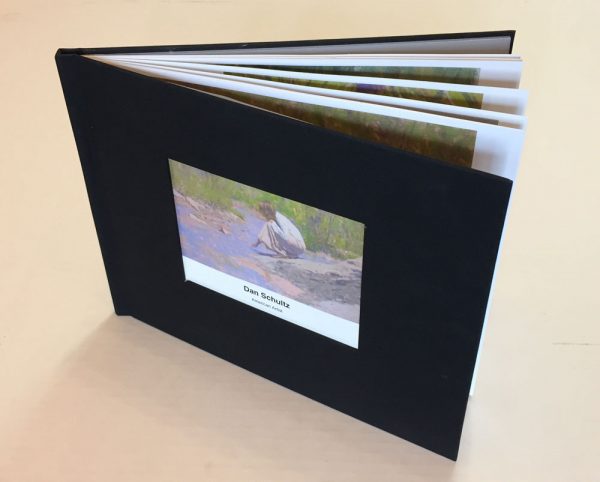There may come a time in the life of an artist when he or she looks at a recent creation and declares with pride, “Hey, someone out there might pay money for this! But, how do I get their attention?”
Brick-and-mortar art galleries continue to be important places for artists to sell their work, despite the advances of the internet age. From my perspective, many (if not most) people still prefer to see and purchase artwork in person versus seeing a picture of it online and clicking the “Add to Cart” button. That may eventually change, but right now it still can be quite worthwhile to offer works for sale through a physical gallery.
So, how do you get your work into a gallery? Well, I can’t guarantee results, but I do have some suggestions that may help improve your chances.
- Create a body of work that you’d like to present to prospective galleries. (At least 10 pieces, ready for gallery display. Have them framed and ready to hang on the wall for sale.) Invite a trusted friend to give you some honest feedback on the quality of the pieces you’ve chosen.
- Take high-quality photos of the new works.

My portfolio book. - Create a portfolio book showcasing the photos. Order a few copies. I’ve had good results using MyPublisher.com, but there are many other sites that print books on-demand. I like to choose a hard cover for my books and I include 20 pages of photos of my paintings as well as my short biography.
- Decide where you want to start looking for a gallery. Resort town? Big city? Your local arts district?
- Get online and make a list of galleries in your chosen area(s). Look through each gallery’s list of artists and visualize whether your work might fit in with their current inventory. (A gallery will be most likely to show interest if your work fills a niche that they may not already have. Is your work at a similar price point as the other work they carry? Or could yours fill a price point they lack? Is it a subject matter or style they might be missing?)
- As you narrow your search, do whatever research you can into the reputation of each gallery. If you happen to know any of the artists they represent, contact the artists and ask them about their experience working with the gallery. Does it sound like a trustworthy business? Do they communicate well? Do they pay in a timely manner after a sale? Do they advertise?
- Once you choose to approach a gallery, visit in person if at all possible. Do this midweek so as not to interrupt them on a busy weekend. As you look around, make sure you feel that your work could be a good fit there and that you like the overall feel of the place. (Some will disagree with me on this point, but I think when you’re looking for a gallery this way it’s best to show up without an appointment. Let’s face it, you might spend years waiting for a gallery to initiate contact with you. If you try to make an appointment, it’s very easy for them to decline. But the fact is, if the gallery likes your work when they see it, they will likely want to discuss terms to display it right away. Plus, in person you’ll be able to see firsthand how they deal with artists and possibly customers too. It’s hard to beat a visit in person. However, some galleries do request artists submit work in a specific way, so check their websites for that info and honor their requests.)

Inside my portfolio book. - Introduce yourself as an artist and ask if they would take a minute to look at your book. (This is where your portfolio book comes in handy.) A classy book is a very professional way to show your work, and it only takes 30 seconds for a gallery owner or director to flip through it.
- Be prepared for acceptance or rejection. If the gallery declines, thank them kindly and head for the next gallery on your list. (Remember, it’s not personal. They probably talk to dozens of walk-in artists every month.) But, if they like what they see in your book, chances are that they’ll want to see some of your work in person. Have several of your display-ready pieces waiting in your car. They might very well hang them up for sale then and there.
- Have a retail price sheet ready for all the artwork you brought with you. Also, know beforehand what terms are important to you if you do end up making a business agreement with this new gallery. (I’ll go into more detail on this in a future post.)
As I mentioned, I prefer to visit prospective galleries in person. But I’ve also had some success sending my portfolio books through the mail to prospective galleries. Again, it’s easier for galleries to decline this way, but it can be another way to get their attention if you can’t visit in person.
I wish you the best in your gallery searches!

6 Responses
Fran Shriver
Thanks very much for this article. I am still a long way from producing anything that would sell, but I still need to learn the selling part of painting as well.
Lorraine Jordan
Great advise! Thanks so much for the encouragement!!
John P. Weiss
Very helpful. A future post on contract terms, things to watch out for, etc would be great too! And nice display book!
Leigh sparks
Thank you for such great words of advice! As a gallery owner, I get so many artists popping in wanting me to represent them. Then they try to show me small images on a cell phone. Awkward!!! The book is a great idea. I do give follks a chance and lately have accepted new works because they brought it a quality piece.👍🖼
Colleen Veneri
Thanks Dan. Do you have any posts on tips to photograph the art? If not, that would be a great topic for the future! Appreciate all the info that you share!
Garrett Schuh
Thanks for sharing this information Dan! This is great advice.